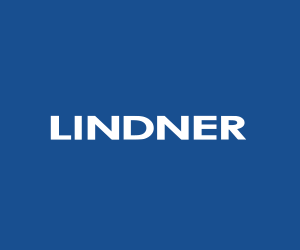plasticker-News
| 2010-05-05 |

|
Pallmann: Economical Reintroduction of Film waste into the Production Cycle
|
Film waste arises in the most different types and shapes. The waste ranges from thick PVC, - PE- and polyester film up to PP- and thin polyester film, stretched on both sides. Piles, packages, bales and edge trimmings, roles and sheets, continuous and discontinuous, clean or soiled. The processing steps to be performed for the preparation of this thermoplastic film waste heavily dependent on the varietal purity and the degree of pollution. Clean film waste of a single variety, such as production rejects and edge trimmings can be directly size-reduced "in-line" or "off-line" and can be re-introduced into the production process. Much more elaborate is the recycling of mixed and polluted polymers. In most cases, the following processing steps are necessary: Presorting, precutting, discharging of metal and impurities, re-cutting, washing, separating, drying, agglomerating, mixing and extruding as well as treatment of the wash water. Highest demands are placed on the knife mills with regards to performance as well as mechanical strength during the size reduction of film waste. During the operation of these machines the cutting gap widens due to the natural wear of the rotor- and stator knives. The energy consumption and the mechanical stress of all machine parts are thereby increasing. Knife mills for the cutting of film from PALLMANN are equipped with precisely alternating angle-cutting rotors. The increased amount of rotor- and stator knives provide for a longer, continuous and thereby more economical operation. If the waste consists of thick-walled or compact parts, the preparation is relatively simple. If it consits, however, of thin film waste, then, in most cases, a free-flowing, recycleable product cannot be achieved by simple size reduction. After the materials have been reduced to the desired size, an agglomeration is necessary. The Pallmann Plast-Agglomerator is the machine for job. All thermoplastics such as polyethylene, polypropylene, polystyrene, polyamide, polyester, PVC, ABS etc. as well as mixtures (i.e. plastic-coated paper, wood-plastic mixtures, plastic powder mixtures. Plastics with organic or inorganic components etc.) can be continuously processed all in one system. Contrary to other processes such as extrusion, the thermoplastics in the Plast-Agglomerator are not heated to the melting point and are thereby only exposed to a minimum of heat thermodegradable damage. In the newest generation of the Plast-Agglomerator, a wet agglomerating system is available. It allows the customer to process precut thermoplastic waste in a moist to wet condition to an agglomerate. The initial moisture content of the feed material can be between 30-40 %. The advantage is that a thermal drying process is not required after agglomeration. The customer achieves a first-class agglomerate with high bulk density which allows the feeding to an extruder without the use of a stuffing box, announced Pallmann. More Information: www.pallmann.eu K 2010, Düsseldorf, 27.10.-3.11.2010, Hall 9, Stand 9A22 |
Pallmann Maschinenfabrik GmbH & Co. KG, Zweibrücken, Germany
 back to news list back to news list |  back to top back to top |














